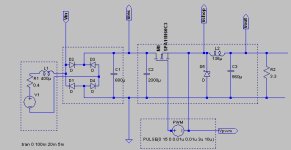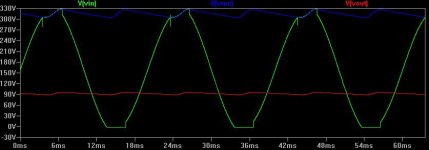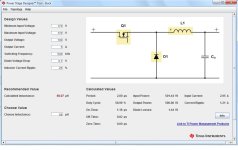Alan B
100 GW
For some time I've been thinking about the potential for a barebones high power charger. I see that the Electric Car folks are already well along on this with DIY 10KW chargers and 25KW on the way.
So should we have a similar scaled down unit? Something sized for ebike batteries. On 120V we can get 1.5KW, the folks with 240 a bit more.
These designs are small and light for their power level. They are far beyond the basic "bad boy" chargers and are regulated. They rectify the line, charge a cap, switch into an inductor with an IGBT, filter with a capacitor, and control the works with a little microprocessor like an Arduino. At the 240V 10KW level they cost about $600-800 in kit form. At the ebike level they will be even less expensive. They have open source designs and software that could be modified for ebike use. At ebike power levels it might be okay to use a big FET or two instead of the IGBT, but either should work.
Someone already done this? Any interest in it??
Here is one of the DIY EV Charger threads:
http://www.diyelectriccar.com/forums/showthread.php/10kw-60a-diy-charger-open-source-59210.html
Also found an ES thread on a simple "dirty charger" that has some simpler (and more dangerous) charging ideas:
http://endless-sphere.com/forums/viewtopic.php?f=14&t=19658
Dangerous charger is also similar:
http://endless-sphere.com/forums/viewtopic.php?f=2&t=31428
Charging with unstabilized power supply:
http://endless-sphere.com/forums/viewtopic.php?f=14&t=31384
Rectified Mains charge lead:
http://endless-sphere.com/forums/viewtopic.php?f=14&t=30664
So should we have a similar scaled down unit? Something sized for ebike batteries. On 120V we can get 1.5KW, the folks with 240 a bit more.
These designs are small and light for their power level. They are far beyond the basic "bad boy" chargers and are regulated. They rectify the line, charge a cap, switch into an inductor with an IGBT, filter with a capacitor, and control the works with a little microprocessor like an Arduino. At the 240V 10KW level they cost about $600-800 in kit form. At the ebike level they will be even less expensive. They have open source designs and software that could be modified for ebike use. At ebike power levels it might be okay to use a big FET or two instead of the IGBT, but either should work.
Someone already done this? Any interest in it??
Here is one of the DIY EV Charger threads:
http://www.diyelectriccar.com/forums/showthread.php/10kw-60a-diy-charger-open-source-59210.html
Also found an ES thread on a simple "dirty charger" that has some simpler (and more dangerous) charging ideas:
http://endless-sphere.com/forums/viewtopic.php?f=14&t=19658
Dangerous charger is also similar:
http://endless-sphere.com/forums/viewtopic.php?f=2&t=31428
Charging with unstabilized power supply:
http://endless-sphere.com/forums/viewtopic.php?f=14&t=31384
Rectified Mains charge lead:
http://endless-sphere.com/forums/viewtopic.php?f=14&t=30664




